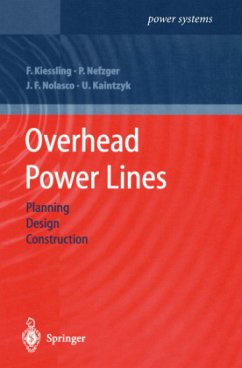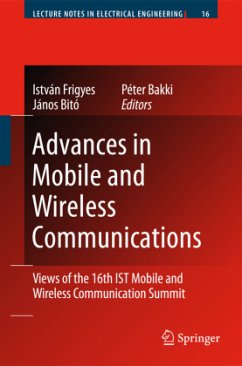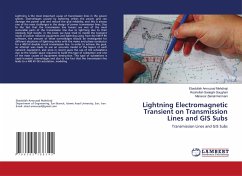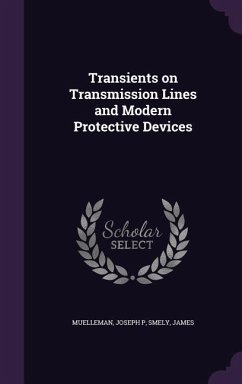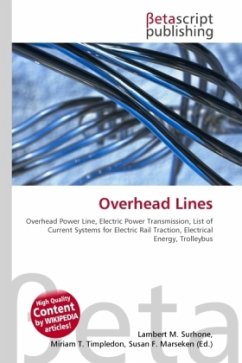
Overhead Lines
Versandkostenfrei!
Versandfertig in 6-10 Tagen
32,99 €
inkl. MwSt.

PAYBACK Punkte
16 °P sammeln!
High Quality Content by WIKIPEDIA articles! Overhead lines or overhead wires are used to transmit electrical energy to trams, trolleybuses or trains at a distance from the energy supply point. Overhead line is designed on the principle of one or more overhead wires situated over rail tracks, raised to a high electrical potential by connection to feeder stations at regular intervals. The feeder stations are usually fed from a high-voltage electrical grid.Electric trains that collect their current from overhead line system use a device such as pantograph, bow collector, or trolley pole. The devi...
High Quality Content by WIKIPEDIA articles! Overhead lines or overhead wires are used to transmit electrical energy to trams, trolleybuses or trains at a distance from the energy supply point. Overhead line is designed on the principle of one or more overhead wires situated over rail tracks, raised to a high electrical potential by connection to feeder stations at regular intervals. The feeder stations are usually fed from a high-voltage electrical grid.Electric trains that collect their current from overhead line system use a device such as pantograph, bow collector, or trolley pole. The device presses against the underside of the lowest wire of an overhead line system, the contact wire. The current collectors are electrically conductive, and allow current to flow through to the train or tram, and back to the feeder station through the steel wheels and one or both running rails. Diesel trains may pass along these tracks without affecting the overhead line, although there may be difficulties with overhead clearance. Alternative electrical power transmission schemes for trains include third rail, batteries, and electromagnetic induction.




